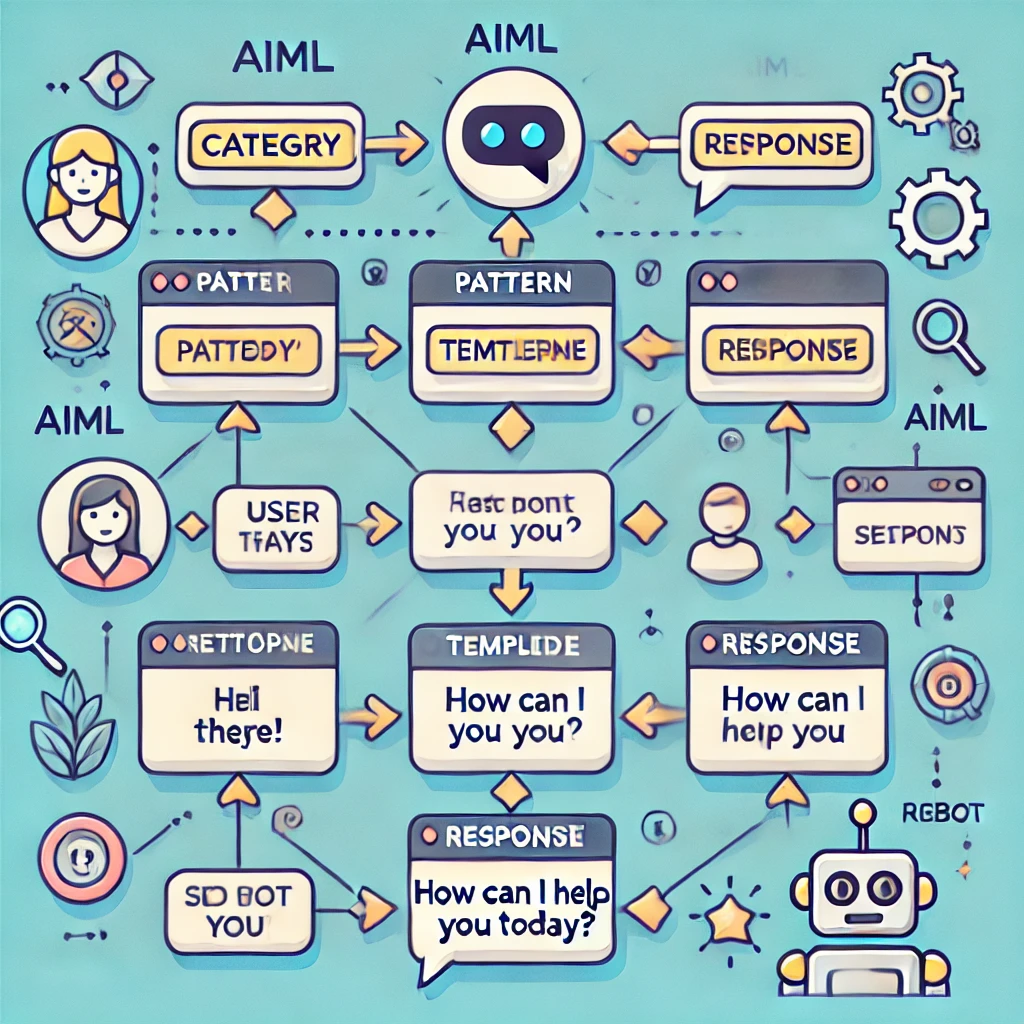Artificial Intelligence Markup Language (AIML) is a powerful tool used for building chatbots. Whether you’re looking to create a customer service assistant or a personal hobby project, AIML can help bring your conversational AI to life. In this blog, we will break down what AIML is, how it works, and how you can use it to develop effective chatbots.
What is AIML?
AIML, or Artificial Intelligence Markup Language, is an XML-based language created to develop conversational agents, commonly known as chatbots. It was originally developed by Richard Wallace for the A.L.I.C.E chatbot and has since been widely used to build interactive Q&A systems. AIML is a rule-based approach, which means it provides predefined responses based on user inputs, making it suitable for straightforward question-and-answer interactions.
Why Use AIML for Chatbot Development?
AIML is ideal for beginners because of its simplicity and ease of use. It requires minimal programming experience and allows developers to create a set of conversational rules that the bot can use to respond intelligently. Here are some key benefits of using AIML for chatbot development:
- Ease of Learning: AIML is easy to understand thanks to its simple XML structure.
- Community Support: With a large community, there are many resources and examples to learn from.
- Control Over Responses: You can control exactly what the chatbot says, which makes AIML ideal for creating accurate and consistent answers to common queries.
How Does AIML Work?
AIML is built around a pattern-response structure. Each unit of knowledge in AIML is called a category, which consists of two main parts:
- Pattern: This is the user’s input that the chatbot will recognize.
- Template: This is the response the chatbot will give when the pattern is matched.
Here’s a simple example to help you understand:
<category>
<pattern>HELLO</pattern>
<template>Hi there! How can I help you today?</template>
</category>In this example, when the user types “HELLO,” the bot will respond with “Hi there! How can I help you today?”
Using Wildcards to Make Your Bot Smarter
Wildcards allow AIML bots to handle variations in user inputs. The * and _ wildcards can match different parts of the user’s query, which makes the bot more flexible. Here’s an example:
<category>
<pattern>HOW ARE YOU *</pattern>
<template>I am just a computer program, but I'm here to assist you!</template>
</category>This pattern will match any input that begins with “HOW ARE YOU,” allowing the chatbot to respond to different versions of the same question.
SRAI: Reusing Patterns to Keep Things Simple
AIML also uses SRAI (Symbolic Reduction Artificial Intelligence), which helps reuse patterns and simplify your code. Instead of writing multiple responses for similar inputs, SRAI allows you to redirect inputs to existing patterns. Here’s an example:
<category>
<pattern>HI</pattern>
<template><srai>HELLO</srai></template>
</category>This means if the user says “HI,” the bot will treat it the same as if the user said “HELLO.”
Building Context-Aware Bots with AIML
One limitation of AIML is that it struggles to maintain complex conversations across multiple turns. However, you can use topic tags and that tags to add some context awareness to your chatbot. While AIML might not be as advanced as machine learning-driven systems, it’s a great option for simple customer service bots and FAQ assistants.
SEO Tips for Your AIML-Based Chatbot
If you’re developing a chatbot using AIML and want to improve SEO for your site, here are a few tips:
- Integrate Chatbot Answers with Your Content: Use your AIML bot to provide direct answers that match the content of your website. This helps improve user engagement and can lower bounce rates.
- Optimize Your Chatbot for Long-Tail Keywords: Create categories in your AIML file that match common long-tail search phrases your target audience might use.
- Use Schema Markup: Adding chatbot responses as FAQ schema can help search engines understand the purpose of your content, improving search visibility.







